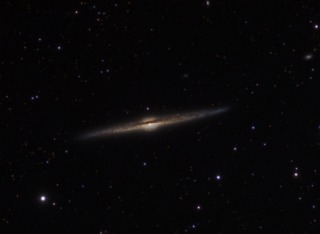
- Constellation: Coma Berenices
- Right Ascension: 12h 36m 20.8s
- Declination: +25° 59′ 16″
- Distance: 40 million +/- 10 million lly
NGC 4565 or the Needle Galaxy, edge on view of a spiral galaxy located in Coma Berenices, around 40 million light years away. A prominent dust lane is visible the entire length of the galaxy. Slightly larger than our own galaxy, with over two hundred globular clusters that surround the galaxy.
- Details
- Category: Galaxies
- Telescope: Explore Scientific 127 Refractor
- Camera: Atik 314l+
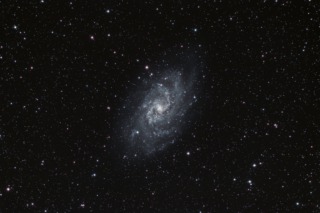
- Constellation: Triangulum
- Right Ascension: 01h 33m 50.02s
- Declination: +30° 39′ 36.7″
- Distance: 3 million
M 33 or the Triangulum Galaxy at only 3 million light years away, is the third biggest galaxy in our local group of galaxies. It is a smaller spiral galaxy with a size of 60,000 light years across compared to M 31's 220,000 light years size. Furthest distance object that is capable of being seen with only the eye, although it would take clear and dark skies to see it. Probably first recorded by Giovanni Battista Hodierna in 1654. Compiled by Charles Messier in his catalog in 1771.
- Details
- Category: Galaxies
- Telescope: EDT 80mm Reftactor
- Camera: ZWO A071 Color
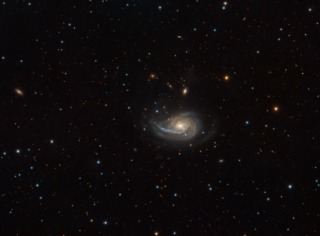
- Constellation: Aries
- Right Ascension: 01h 59m 19.6s
- Declination: +19° 00′ 27″
- Distance: 130 million ly
Start off the year with a galaxy, NGC 772. 130 million light years away in Aries, at twice the size of our galaxy. Elongated spiral arm probably caused by one of its satellite galaxies.
- Details
- Category: Galaxies
- Telescope: Explore Scientific 127 Refractor
- Camera: Atik 314l+
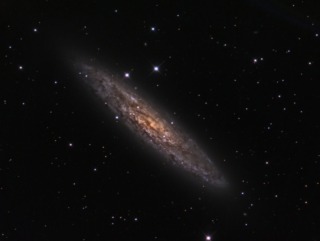
- Constellation: Sculptor
- Right Ascension: 00h 47m 33s
- Declination: −25° 17′ 18″
- Distance: 11.5 million ly
Located in Sculptor, of course, the Sculptor Galaxy is sometimes referred to as the Silver Dollar Galaxy. It is one of the brighter galaxies after the ones in the Local Group.
Discovered by Caroline Herschel in 1783, William Herschel added it to his catalog of deep sky objects.
Imaged with a remote telescope located in Australia.
- Details
- Category: Galaxies
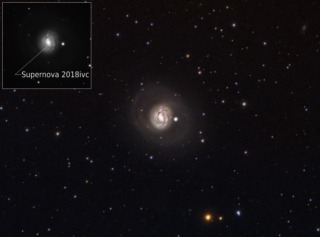
- Constellation: Cetus
- Right Ascension: 2h 42m 40.7s
- Declination: −00° 00′ 48″
- Distance: 47 million ly
Messier 77 is an active galaxy located in the constellation of Cetus (The Sea Monster). It has an active galactic nucleus and is classified as a type 2 Seyfert galaxy. It is one of the closest of this type of galaxy.
The first supernova detected in this galaxy was discovered on November 24, 2018 by the DLT40 Survey and was given the name of SN2018ivc. It is classified as a type II supernova which is a core collapse of a massive star.
- Details
- Category: Galaxies
- Telescope: Explore Scientific 127 Refractor
- Camera: Atik 314l+
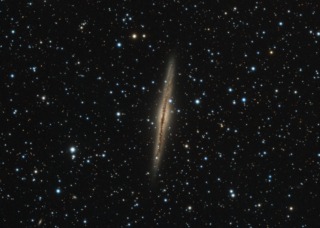
- Constellation: Andromeda
- Right Ascension: 02h 22m 33.4s
- Declination: +42° 20′ 57″
- Distance: 27 million ly
NGC 891 is an edge on spiral galaxy in which the disk of the galaxy shows many dusty regions. Filaments of the dust extend out from the disk, it is thought that supernova explosions might have caused them.
- Details
- Category: Galaxies
- Telescope: Explore Scientific 127 Refractor
- Camera: Atik 314l+